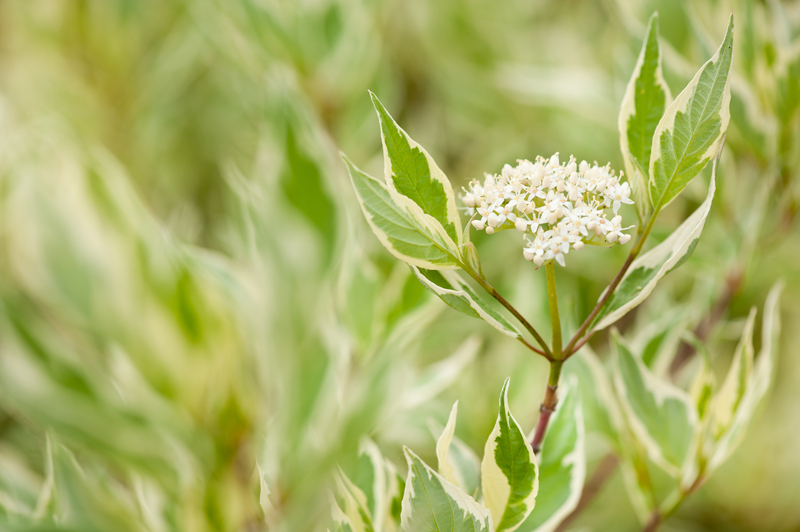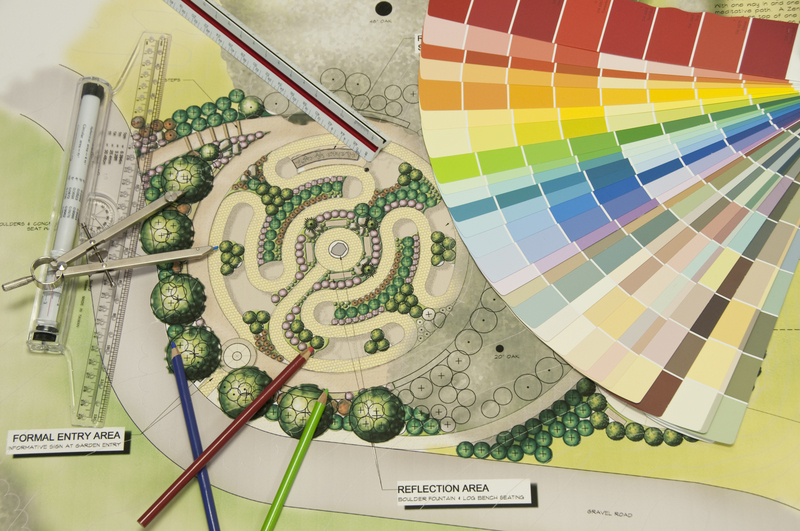Harnessing nature with container gardening
Posted on 10/06/2025
Harnessing Nature with Container Gardening: A Comprehensive Guide
Discover the joy and benefits of harnessing nature with container gardening. Whether you have a sprawling backyard or just a cozy balcony, container gardening offers a flexible, efficient, and creative way to bring a touch of green into your life. In this detailed guide, we'll explore the essentials of container gardening, tips for maximizing your plants' potential, and innovative ideas to fit any space and lifestyle.
What is Container Gardening?
Container gardening refers to growing plants exclusively in pots, planters, or other containers instead of directly in the ground. This method has surged in popularity with urbanization, allowing people to grow lush gardens even in apartments, patios, or rooftops.
Container gardening is more than just a trend - it's a practical way to harness nature, beautify your surroundings, and even grow your own food, no matter your living situation.
Why Choose Container Gardening?
- Space efficiency: Ideal for small spaces, balconies, or windowsills.
- Portability: Easily move plants to catch sunlight or avoid harsh weather.
- Soil control: Customize soil to the specific needs of your plants.
- Pest and disease management: Isolate plants and reduce risk of infestations.
- Accessibility: Suitable for people with limited mobility as containers can be raised.
Harnessing nature with potted plants can revolutionize how you interact with your environment, making gardening accessible to everyone.

Getting Started: Essential Elements of Successful Container Gardening
1. Selecting the Right Container
The container is your garden's foundation. The size, material, and drainage capability are crucial factors to consider:
- Size: Ensure ample space for roots to grow. Small pots dry out fast; large containers retain more moisture.
- Material: Terracotta, ceramic, plastic, wood, and metal are popular. Each has pros and cons regarding heat retention, weight, and durability.
- Drainage Holes: Prevent root rot by ensuring containers have adequate drainage.
Experimenting with repurposed or upcycled containers can also add creativity and sustainability to your gardening experience.
2. Choosing the Perfect Potting Mix
Garden soil is too heavy for containers. Use a quality potting mix designed for container gardening. A good mix offers:
- Proper aeration with perlite, vermiculite, or coconut coir
- Efficient drainage to prevent waterlogging
- Essential nutrients for healthy plant growth
For organic options, consider amending your mix with compost, worm castings, or organic fertilizers, all of which enhance the vitality of your container plants.
3. Selecting Plants for Container Gardening
The versatility of container gardens allows you to grow almost anything: flowers, vegetables, herbs, even small fruit trees! When choosing plants, consider:
- Sunlight requirements: Match plant needs with the available light in your space.
- Growth habits: Some plants thrive in tight spaces; others need room to sprawl or climb.
- Companion planting: Mix varieties that complement each other - for example, pair basil with tomatoes.
- Climate: Opt for plants suited to your region and the microclimate of your garden area.
*Pro tip: Harness the power of vertical gardening using tiered shelves, wall planters, or hanging baskets to maximize your growing area.*
Maximizing Success: Nurturing Nature in Containers
Watering Your Container Garden
Consistent and correct watering is the key to flourishing container plants. Since containers dry out faster than garden beds, check moisture levels regularly.
- Best practices:
- Water when the top inch of soil feels dry.
- Water until it runs from the drainage holes.
- Avoid overhead watering to reduce risk of fungal issues.
- During hot weather, check pots daily or use self-watering planters.
Feeding Your Container Plants
Regular fertilizing is necessary, since containers have limited soil nutrients. Use slow-release granules or dilute liquid fertilizers according to the plant species.
- Vegetables and fruits: Require more frequent feeding during the growing season.
- Flowers and foliage: Use a balanced fertilizer for vibrant growth and color.
Remember: Over-fertilizing can stress plants, while under-fertilizing can stunt growth.
Managing Pests and Diseases
Container gardens are generally less prone to pests than in-ground beds, but vigilance is crucial. Practice regular inspection and remove dead leaves or debris.
- Physical barriers: Use netting or fine mesh against insects.
- Organic solutions: Employ neem oil or soapy water for aphids or mites.
- Healthy air circulation: Avoid overcrowding your containers.
Harness natural biodiversity by attracting helpful pollinators and encouraging beneficial insects like ladybugs.
Creative Ideas for Harnessing Nature with Container Gardening
1. Edible Container Gardens
Grow your own food even without a yard! Many vegetables, herbs, and fruits adapt beautifully to container life.
- Tomatoes, peppers, lettuce, and radishes are popular choices.
- Strawberries and dwarf citrus trees add sweet rewards.
- Herbs like rosemary, mint, and parsley thrive in pots.
Mix textures and colors for a beautiful and productive mini-garden right outside your door.
2. Ornamental and Flowering Containers
Harnessing the beauty of nature means bringing vibrant blooms and fragrant flowers into your living space. Try:
- Annuals such as petunias or marigolds for all-season color.
- Bulbs like tulips or daffodils for spring interest.
- Trailing plants like lobelia or ivy for dramatic cascades.
Arrange containers in clusters for visual impact, mixing heights and hues for a dynamic display.
3. Indoor Container Gardening
Don't let a lack of outdoor space hold you back. Indoor containers can host lush foliage plants, succulents, or air-purifying varieties like snake plants and pothos.
- Choose low-light tolerant plants for shadier rooms.
- Decorative planters double as home decor accents.
4. Vertical and Hanging Gardens
Vertical gardening uses walls, trellises, and homemade systems to grow more plants in less space. This is perfect for urban apartments where ground space is scarce.
- Install wall-mounted pockets, shelves, or modular systems.
- Use hanging baskets for trailing flowers and herbs.
- Create garden towers from stacked pots or old pallets.
Environmental Benefits of Container Gardening
Embracing nature through container gardening goes beyond aesthetics. It has real, positive impacts on your well-being and the environment:
- Boosts biodiversity: Welcoming a variety of plants supports pollinators and beneficial insects.
- Improves air quality: Indoor and porch plants filter toxins, making your air cleaner.
- Reduces food miles: Home-grown veggies and herbs require no transportation or packaging.
- Enhances mental health: Gardening reduces stress, increases focus, and boosts happiness.
By harnessing the power of nature with container gardening, even the smallest actions can contribute to a greener, more sustainable world.
Overcoming Common Challenges in Container Gardening
Watering Issues
- If your containers dry out quickly, try adding mulch on top of the soil to retain moisture.
- Group containers together to create a humid microclimate.
- Consider self-watering planters or drip irrigation systems for convenience.
Limited Sunlight
- Use mirrors or light-colored backgrounds to reflect light onto your plants.
- Opt for shade-tolerant varieties if sunlight is scarce.
- Rotate pots regularly for even growth.
Nutrient Depletion
- Top up containers with fresh compost each season.
- Use water-soluble fertilizers monthly during peak growth.
Overcrowding
- Follow plant spacing recommendations.
- Prune regularly to ensure healthy airflow.

Tips for a Thriving Container Garden
- Start small: Experiment with a few pots and expand as you gain experience.
- Observe your plants: Learn their needs and adapt your care routine.
- Change it up seasonally: Rotate crops or swap in seasonal blooms for year-round interest.
- Get creative: Use repurposed containers like buckets, baskets, or vintage crates for an eco-friendly touch.
The Joy of Harnessing Nature with Container Gardening
Container gardening doesn't just offer convenience - it connects you with the rhythms of the natural world. Nurturing a seed into a vibrant plant, harvesting fresh vegetables, or simply admiring bright blooms can bring immense satisfaction and peace.
By harnessing nature with container gardening, you gain a healthier home, a sustainable hobby, and a deeper appreciation for the green world around you.
Conclusion
Whether you dream of a tranquil urban jungle or a balcony brimming with tomatoes and herbs, container gardening makes it all possible. By starting with the basics, choosing the right plants, and embracing creative solutions, everyone can enjoy the rewards of harnessing nature in containers.
Roll up your sleeves, pick your pots, and start harnessing the vibrant energy of nature today with container gardening!
For more tips, inspiration, and detailed care guides, explore our other gardening articles and turn your living space into an oasis of green.

